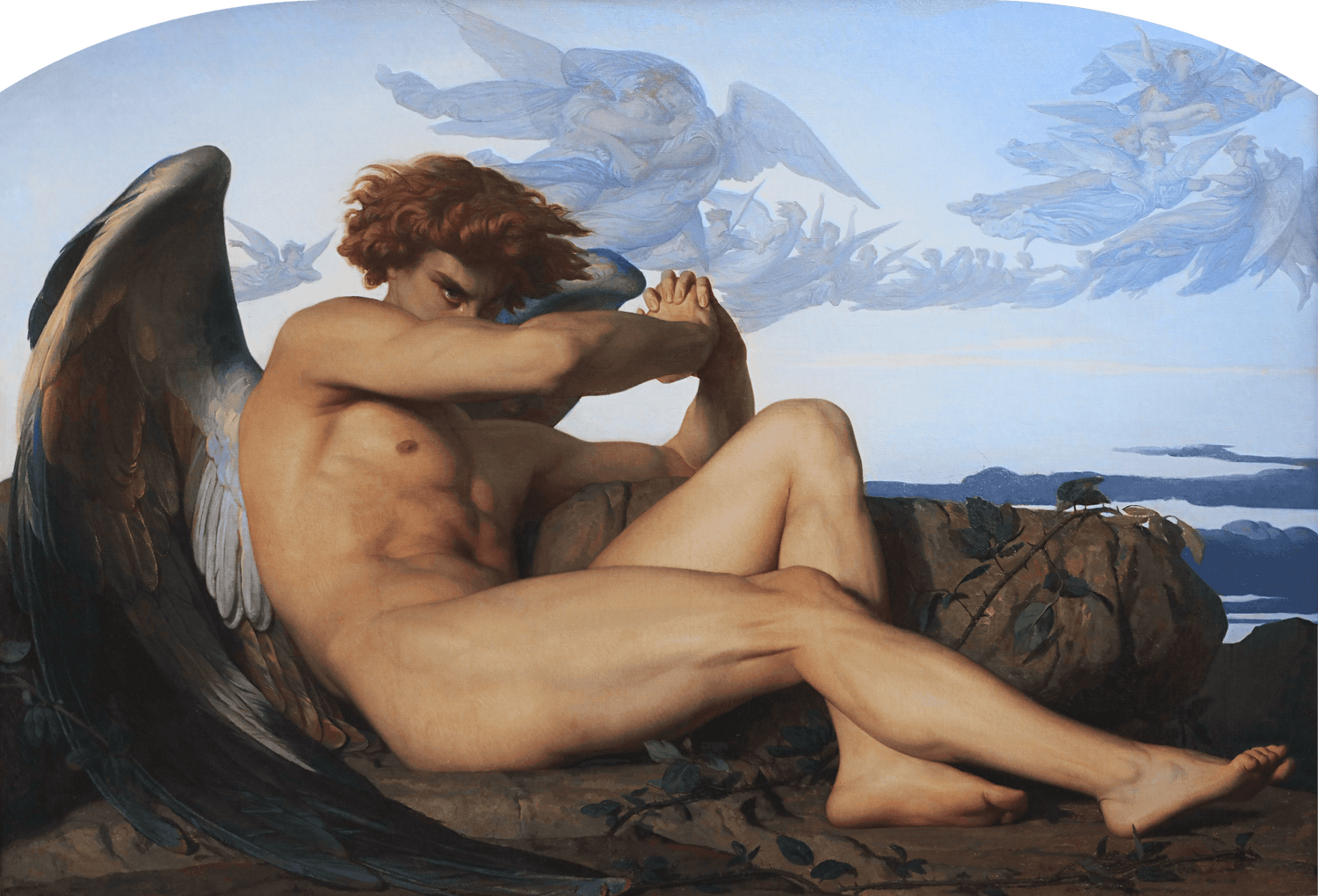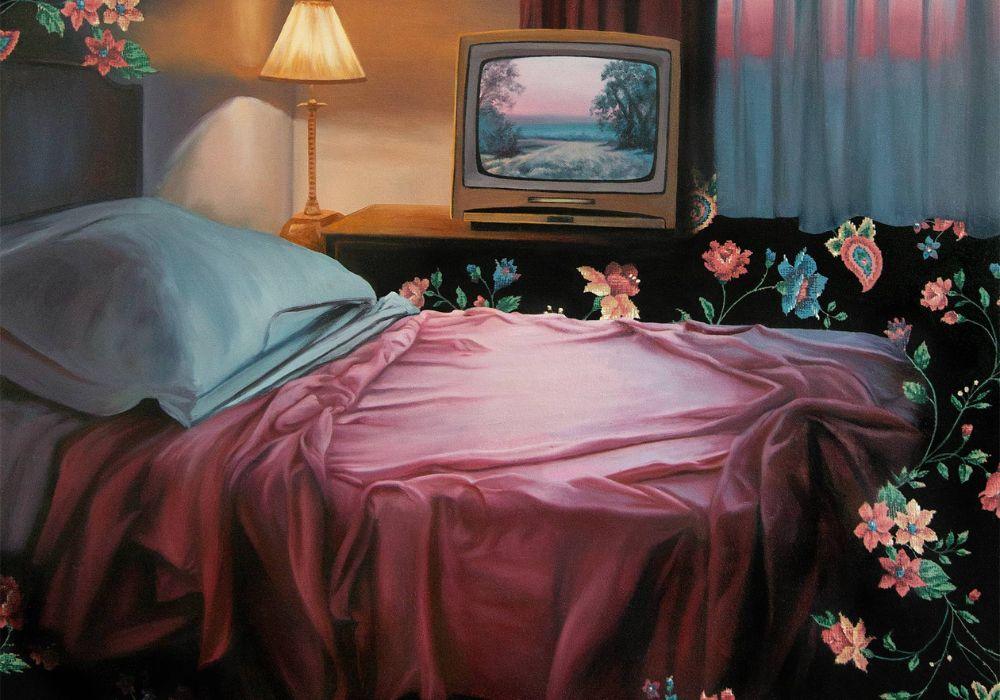 As an art historian and enthusiast, I have always been fascinated by the works of Alexandre Cabanel, particularly his masterpiece, the Fallen Angel painting. This enigmatic painting has captured the attention and imagination of art lovers and critics alike for more than a century. In this article, I will delve into the story behind the painting, analyze its symbolism and meaning, explore Cabanel's artistic style and techniques, and discuss its reception and legacy. I will also compare it with other famous Fallen Angel paintings and discuss whether collecting such paintings is an investment or a passion.
As an art historian and enthusiast, I have always been fascinated by the works of Alexandre Cabanel, particularly his masterpiece, the Fallen Angel painting. This enigmatic painting has captured the attention and imagination of art lovers and critics alike for more than a century. In this article, I will delve into the story behind the painting, analyze its symbolism and meaning, explore Cabanel's artistic style and techniques, and discuss its reception and legacy. I will also compare it with other famous Fallen Angel paintings and discuss whether collecting such paintings is an investment or a passion.
Introduction to Alexandre Cabanel's Fallen Angel Painting

Alexandre Cabanel (1823-1889) was a prominent French academic painter who was known for his highly polished and idealized portraits of women. He was a leading figure of the academic art movement, which emphasized classical and historical subjects, precise rendering, and technical proficiency. Cabanel's Fallen Angel painting, which he completed in 1868, is a departure from his usual style and subject matter. It is a large-scale oil painting that depicts a male figure, identified as Lucifer or Satan, who has fallen from grace and is lying on the ground, his wings broken and his face contorted in agony.
The Story Behind the Fallen Angel Painting

Cabanel's Fallen Angel painting was inspired by John Milton's epic poem, Paradise Lost, which tells the story of the fall of Satan and his rebellion against God. In the poem, Satan is depicted as a tragic hero who defies God's authority and leads a rebellion of the angels against heaven. However, he is defeated and cast out of heaven, along with his followers, and falls into hell. Milton's portrayal of Satan as a complex and sympathetic character was highly influential, and many artists, including Cabanel, were drawn to the dramatic and emotional potential of this subject.
Cabanel's Fallen Angel painting was also influenced by the Romantic movement, which emphasized individualism, emotion, and imagination. The painting's dark and moody atmosphere, the broken wings, and the twisted body of the fallen angel are all typical of Romantic art. Cabanel's painting was also part of a larger trend in 19th-century art that explored the darker side of human nature and the struggle between good and evil.
Analyzing the Painting: Symbolism and Meaning

Cabanel's Fallen Angel painting is rich in symbolism and meaning. The fallen angel is depicted lying on the ground, his wings broken and his face contorted in pain. His body is muscular and idealized, but his expression is agonized and anguished. The landscape behind him is dark and barren, and the sky is stormy and ominous. The painting's composition, lighting, and color all contribute to its emotional and dramatic impact.
The broken wings of the Fallen Angel painting symbolize the fall from grace and the loss of divine power. The twisted body and anguished expression of the fallen angel convey the pain and suffering of his punishment. The dark and barren landscape behind him represents the desolation and despair of his fall. The stormy and ominous sky suggests the wrath and judgment of God.
Cabanel's Artistic Style and Techniques
Cabanel's Fallen Angel painting is a masterpiece of academic art. The painting's composition, lighting, and color are all carefully designed to create a powerful emotional impact. The fallen angel is depicted in a highly polished and idealized style, with every muscle and sinew rendered with meticulous attention to detail. The landscape and sky are also rendered with great precision and realism, creating a stark contrast with the supernatural and otherworldly figure of the fallen angel.
Cabanel's use of light and shadow is particularly effective in creating a sense of drama and emotion. The fallen angel is bathed in a soft and diffuse light that emphasizes the contours of his body and creates a sense of depth and volume. The dark and ominous sky is lit by flashes of lightning, which add to the painting's sense of drama and tension.
The Reception of the Painting: Criticisms and Praise

Cabanel's Fallen Angel painting was highly controversial when it was first exhibited in Paris in 1868. Some critics praised the painting as a masterpiece of academic art, while others criticized it as a departure from Cabanel's usual style and subject matter. Some critics also objected to the painting's dark and emotional content, which they felt was inappropriate for a work of art.
Despite the controversy, Cabanel's Fallen Angel painting was widely admired by the public and became one of his most famous works. The painting was also reproduced in many forms, including engravings and lithographs, and was widely distributed throughout Europe and America.
Comparison with Other Famous Fallen Angel Paintings

Cabanel's Fallen Angel painting is one of the most famous depictions of the subject, but it is by no means the only one. Other famous depictions of the fallen angel include Gustave Doré's illustrations for Paradise Lost, William Blake's illustrations for his own poem, Milton's Paradise Lost, and Peter Paul Rubens's painting, The Fall of the Damned.
Each of these depictions of the fallen angel has its own unique style and symbolism. Doré's illustrations are highly detailed and dramatic, while Blake's illustrations are more symbolic and mystical. Rubens's painting is highly emotional and dramatic, with a similar emphasis on light and shadow as Cabanel's painting. However, Cabanel's Fallen Angel painting is unique in its combination of academic realism and Romantic emotion, making it a truly exceptional work of art.
The Legacy of Cabanel's Fallen Angel Painting

Cabanel's Fallen Angel painting has had a lasting impact on the history of art. It is a masterpiece of academic art and a powerful example of the Romantic tradition. The painting's emotional content and dramatic impact have inspired countless artists and art lovers over the years, and it remains a popular subject for artists today.
The painting's legacy can also be seen in its influence on other forms of art, including literature, music, and film. The story of the fallen angel has inspired countless writers, composers, and filmmakers, and its themes of rebellion, temptation, and redemption continue to resonate with audiences today.
Where to See the Painting Today
Cabanel's Fallen Angel painting is currently held in the collection of the Musée Fabre in Montpellier, France. The painting is on display in the museum's permanent collection and is a popular attraction for art lovers and tourists alike.
Collecting Fallen Angel Paintings: Investment or Passion?

For art collectors and enthusiasts, collecting fallen angel paintings can be both a passion and an investment. The subject of the fallen angel has a long and rich history in art, and there are many famous and highly sought-after works of art that depict this subject. Collecting such paintings can be a way to connect with the history of art and to appreciate the beauty and emotional power of these works.
However, collecting fallen angel paintings can also be a lucrative investment. The value of such paintings can vary widely depending on the artist, the quality of the work, and the condition of the painting. Collectors who are interested in investing in fallen angel paintings should do their research and consult with experts in the field to ensure that they are making informed and wise investments.
Conclusion and Final Thoughts

Alexandre Cabanel's Fallen Angel painting is a masterpiece of academic art and a powerful example of the Romantic tradition. The painting's emotional content and dramatic impact have inspired countless artists and art lovers over the years, and it remains a popular subject for artists today. The painting's legacy can also be seen in its influence on other forms of art, including literature, music, and film.
Collecting fallen angel paintings can be both a passion and an investment, and there are many famous and highly sought-after works of art that depict this subject. Whether you are a collector, an art lover, or simply someone who appreciates the beauty and emotional power of great works of art, Cabanel's Fallen Angel painting is a must-see masterpiece that is sure to leave a lasting impression.







2 comments
Ted
my painting is crowned in gold bunnelli 1928
ted
my painting illustrates three babies and mother Theresa with black spotches on there face 1928
Leave a comment
All comments are moderated before being published.
This site is protected by hCaptcha and the hCaptcha Privacy Policy and Terms of Service apply.